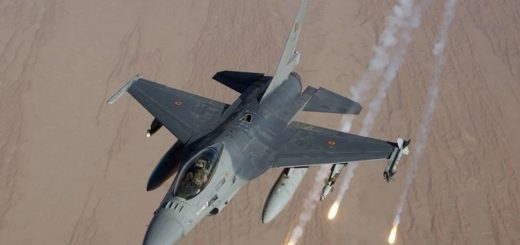Russian drone overflew Vilnius with explosives, Lithuania urges NATO response
In less than a month, two military-grade drones of Russian design have crossed into Lithuanian airspace from Belarus. The first crashed shortly after crossing the border. The second, however, flew over the capital, Vilnius, startling residents early in the morning before eventually crashing inside a Lithuanian military training area.
The incidents, both involving Gerbera-type drones resembling the Iranian-made Shahed loitering munitions, have exposed critical gaps in NATO’s air defense posture and triggered urgent calls from Lithuania for stronger protection along the Alliance’s eastern flank. This became even more pressing on the evening of August 5, 2025, when Lithuanian officials revealed during a press conference that the second drone was carrying an active warhead.
Explosive-laden drone flew above Vilnius
The most alarming of the two events took place on the morning of July 28, 2025, when a drone entered Lithuanian airspace from Belarus and flew more than 100 kilometers across the country, reaching the skies above Vilnius.
Around 05:00, residents of the capital reported hearing a loud, low-altitude buzzing sound, described as “lawnmower-like.” The Lithuanian military later admitted the drone had entered from Belarus.
Russian Gerbara drone over Lithuania near the city of Vilnius pic.twitter.com/MxquJjAf2T— VolgaLad (@cym27s) July 28, 2025
The drone was only located days later, on August 1, 2025, inside the Gaižiūnai military training ground in the Jonava district, approximately 100 kilometers (62 miles) from the Belarus border.
According to Prosecutor General Nida Grunskienė, the aircraft was carrying approximately two kilograms of explosives. For comparison, a Shahed can carry up to 50 kilograms of explosives. The payload was safely neutralized by military specialists, and parts of the drone were taken for forensic analysis.
“Based on the available data, the unmanned aircraft found at the Gaižiūnai training ground […] appears to be a Gerbera drone,” Grunskienė said during a press conference, as quoted by LRT.
Two nearly identical incidents in a week
Just a week earlier, on July 10, 2025, another Gerbera drone had crossed into Lithuania, again from Belarus, but crashed near the border shortly after entry. That drone, too, appeared to be of the same Russian-manufactured design, made primarily of plywood and plastic.
With a wingspan and silhouette nearly identical to the Shahed drones used by Russia in Ukraine, the Gerbera is difficult to detect by radar. Like its more infamous counterpart, it is believed to be manufactured at the Alabuga Special Economic Zone in Tatarstan.
Initially designed to serve as decoys and saturate enemy air defenses, these drones have reportedly also been used for reconnaissance and in some cases as loitering munitions.
Who sent the drones, and why?
The origin of the drones remains officially unknown. They may have been launched by either Russia or Belarus. One official hypothesis is that they were initially intended for a target in Ukraine but were diverted by GPS jamming or electronic warfare and accidentally veered into Lithuania.
While plausible and politically less inflammatory, this theory faces growing scrutiny. The Gerbera’s reported operational range of roughly 600 kilometers (380 miles) makes it unlikely that it strayed from Ukrainian airspace, as Gaižiūnai is located approximately 800 kilometers (500 miles) from the frontline. Its direct flight path over Vilnius suggests either a gross navigational failure or something more deliberate: a probe, a test, or a provocation.
Colonel Dainius Paškevičius, Chief of Staff of the Lithuanian Air Force, acknowledged both the explosive threat and the detection gaps.
“Two kilograms may mean little or a great deal depending on the type and construction of the explosive,” Paškevičius said. “Lithuania has modern medium-range and long-range radars, but we cannot always detect unidentified targets at low or extremely low altitudes in all places due to various interferences. […] There is no silver bullet; it requires a layered, multi-sensor approach.”
NATO’s vulnerability in the drone era
Vilnius lies just 35 kilometers from the Belarusian border, making it especially exposed to low-cost, low-altitude drone intrusions. But Lithuanian officials warn that this is not a local anomaly, it is a preview of a much wider vulnerability shared across NATO’s eastern frontier.
German Brigadier General Christian Freuding recently warned that Russia may soon be able to launch 1,000 to 2,000 drones in a single coordinated strike, overwhelming defenses and draining stockpiles of expensive interceptors.
Foreign Minister Kęstutis Budrys said the situation must serve as a wake-up call:
“This is not just Lithuanian airspace. This is NATO airspace. This is EU security.”
Budrys confirmed that Lithuania had sent a formal letter to NATO Secretary General Mark Rutte, co-signed by Minister of National Defense Dovilė Šakalienė, urging the deployment of additional air defense assets, including experimental systems, on Lithuanian soil. While not explicitly specified, these could include high-speed interceptor drones like those being tested in Ukraine to counter Shahed-type UAVs.
“These repeated incidents represent an alarming sign of the spillover of Russia’s aggression against Ukraine onto NATO territory,” Budrys wrote on social media. “Securing NATO’s Eastern Flank must remain a top priority for the Alliance.” The post Russian drone overflew Vilnius with explosives, Lithuania urges NATO response appeared first on AeroTime.
In less than a month, two military-grade drones of Russian design have crossed into Lithuanian airspace from Belarus.…
The post Russian drone overflew Vilnius with explosives, Lithuania urges NATO response appeared first on AeroTime.





